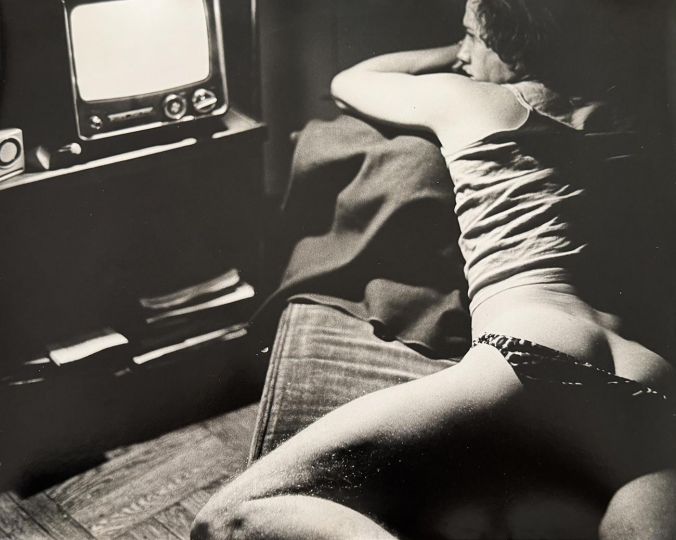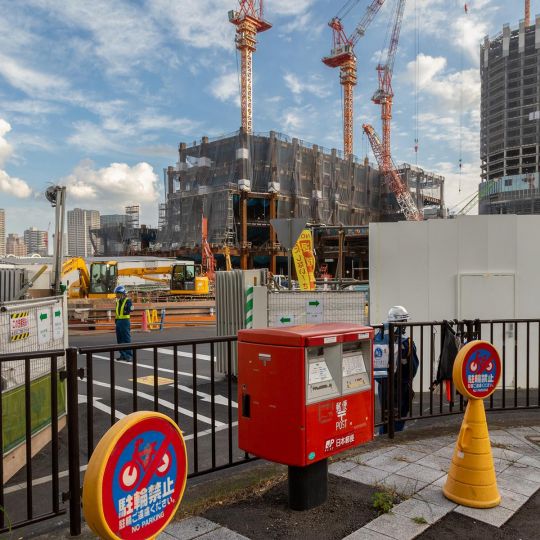Charly Broyez & Laurent Kronental present their series La Cité Oasis (2019 – 2023) with this text:
There are places that we think we know without ever having seen them. Whether it seems familiar or foreign to us, La Grande Motte concentrates a singular evocative power in its name alone. As in fairy tales, it appears as soon as it is called, a fantastic land emerging from the marshes of the collective and individual imagination, carrying memories, images, sounds, colors, eras.
60 years after the birth of an ambitious land development project, Charly Broyez and Laurent Kronental have captured images of what could only have been a mirage. They looked into a mysterious sleeping woman who wakes up with fanfare every summer. They surprised her at dawn.
The design and construction of La Grande Motte dates back to the thirty glorious years after World War II. France then experienced a period of unprecedented economic growth, and paid holidays gave birth to mass tourism. The State, anxious to retain vacationers who mainly went to Spain, planned the creation of seaside resorts intended to retain them.
Creating a city from scratch was not, at the time, anything like an utopia. The triumph of modernity was carried by visionary architects. From an arid land, Niemeyer made Brasilia. At the foot of the Himalayas, Le Corbusier created Chandigarh. On the Camargue marshes, Jean Balladur built La Grande Motte.
The project, led by DATAR, was part of a mission whose name says it all: ” Root “. It’s not just about founding a city on sand, but about bringing it to life. To moor the vacationer in this paradise, for a summer, with the dream of happiness as an only anchor.
Charly Broyez and Laurent Kronental have found traces of a past that has not entirely been abolished: the marshes, with their fishing huts, their horses and their mosquitoes. They also found, under the appearance of an avant-garde city, the hope of a contemporary future.
Both a seaside resort and a port, La Grande-Motte is also a park town, a radiant city on the edge of the sea, which was sometimes nicknamed the “New Florida of the 1970s”.
The lush vegetation, the naivety of the forms, the purity of the colors, the harmony in which these motifs bathe seem as many attempts to return to an origin, somewhere between the Mediterranean and pre-Columbian America.
Perched on the infinity sign, a seagull seems to observe from afar the cloud announcing the great human transhumances. While everything is still asleep, confused noises arrive, joyful cries, resonating in the padded bubble of solitary groups. The light plays on these reliefs, it animates them with a quiet life, far from the hustle and bustle of the metropolises.
By recreating the cosmos, the demiurge architect also made himself the prophet of a new religion. Here, all roads lead to Man, modern or primitive. Heir to the Inca cult of the Sun, leaving his flying saucer on the terrace, swinging between Yin and Yang while flowers doze in the shade of a Moai, praying in a futuristic chapel where portholes replace stained glass windows. This world becomes a setting conducive to hallucinations.
Isn’t that a building? No, it’s an egg, left on the shore by some turtle waiting for it to hatch. Further on, winds a bar of buildings crenellated with balconies while at the Sunset flock endless backs. As well as abandoned toys, the pyramids, the balls, the empty or full circles seem to be waiting for the giant children who will wake them up. This projecting wall is the mouth of a fish blissful to find itself there, in the blue of the sky and not in the water. Moreover, the walls themselves have mouths, eyes, ears; one of them ends with a pine tree that has become an ice cream cone; with its entwined branches, a tree smothers the wall of an arbor. And the church fell the cross to extend to heaven the rounded sign of infinity.
Architecture, where water and concrete come together in a single flow, suggests the fullness of being and the world. To give a past to a city that had none, Jean Balladur had planted the roots of a new city in this virgin land. He now offers us a musing on the permanence of dreams and the utopia of human greatness.
This series invites, behind the aesthetic research, to think of the Grande Motte as a space of life and the crystallization of sensations. Symbol of a dreaming soul, it makes the vacationer, the resident or the spectator a happy person who, like Ulysses, has had a wonderful journey.
Charly Broyez
www.charly-broyez.net
Laurent Kronental
www.laurentkronental.com
















